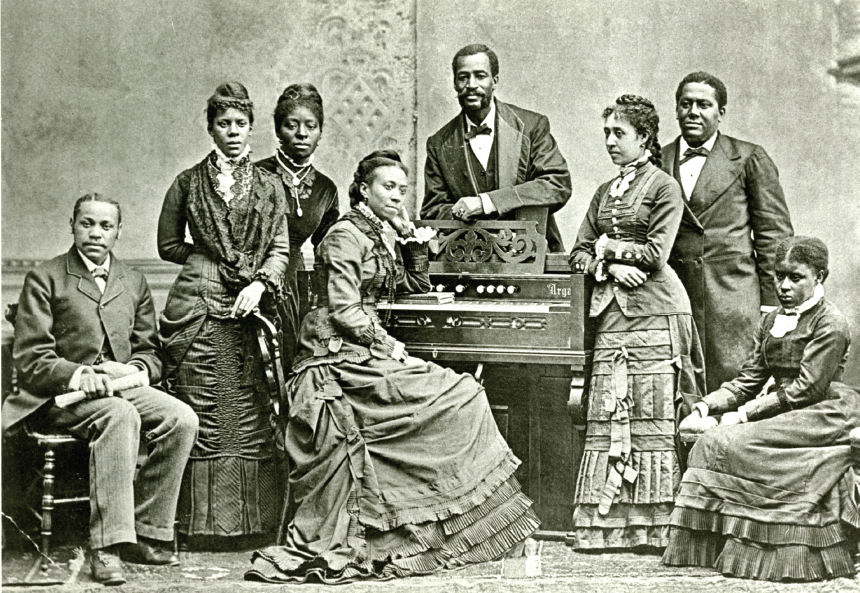African American Music
“The singing was accompanied by a certain ecstasy of motion, clapping of hands, tossing of heads, which would continue without cessation for about half an hour. One would lead off in a kind of recitative style, others joining in the chorus.”
James L. Smith, a former slave, recalls call-
Foster excelled in sentimental ballads, such as “Jeanie with the Light Brown Hair” and “Beautiful Dreamer.” But his most notable songs have to do with the black slaves of his time. There are sentimental “plantation songs” such as “Swanee River” (“The Old Folks at Home”) and “Old Black Joe,” and comic minstrel songs such as “Oh, Susanna!” and “Camptown Races.” The minstrel show, performed by white actors in blackface, was very popular at midcentury; it consisted of comedy routines, “Ethiopian” songs, dances, and solos on the banjo (an instrument with African roots). Today this kind of entertainment strikes us as an ugly parody of black speech and character. Yet it can also be seen as an acknowledgment, almost in spite of itself, of the vitality of the slaves’ music. From at least the time of Foster, African American music has had a profound effect on the music of America at large, and from there on the music of the world.
What was the slaves’ music like? This is hard to say, for there were no devoted folk-
For example, a musical procedure known as call and response is common in West Africa. Phrases sung by a leader — a soloist — are answered or echoed again and again by a chorus. This procedure is preserved in black American church music, when the congregation answers the preacher’s “call,” as well as in spirituals, work songs, and “field hollers,” by which the slaves tried to lighten their labors. It is also an important feature in blues and in jazz, as we shall see.

Spiritual is a term for a religious folk song that came into being outside an established church (white or black). Moving “Negro spirituals,” such as “Nobody Knows the Trouble I’ve Seen” and “Go Down, Moses,” were the first black American music to gain the admiration of the white world. After Emancipation, black colleges formed touring choirs. To be sure, spirituals in their concert versions were considerably removed from folk music.